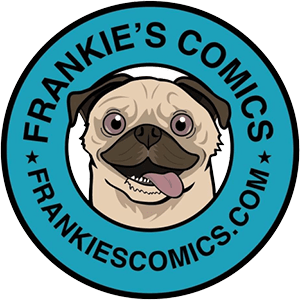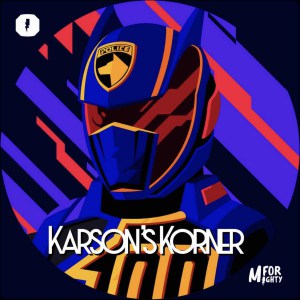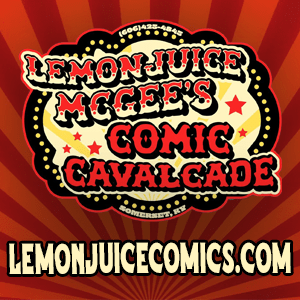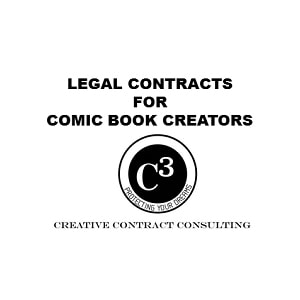Icon Vs. Hardware #3
Recap
Worlds finally Collide as Icon and Hardware find themselves face to face with the fate of the world at hand. Will they be able to set aside their ideological differences long enough to take on the ever greater threats looming in the outer reaches of space? And with the headmaster of her school revealed, can Rocket survive her own educational experience?
Review
Time is broken.
![]()
Curtis Metcalf, aka Hardware, has always been a character that has valued having control over his life. In the wake of Edwin Alva and the rest of Alva industries framing him for a crime that he didn’t commit, he did everything in his power to bring a sense of normalcy back into said life. This allowed him to utilize his great brain and become the mechanized warrior that fans love. However, in this series, that determination has led to him unraveling time to exert even more control over his and others’ fates, including that of Icon. In the series’ first two issues, Reginald Hudlin and Leon Chills gave readers a glimpse into what lengths Curtis would go to for that control. Seeing that it inevitably led to a war between the government and Bang Babies, he goes back even further to counter America’s structural problems with race at the root, confronting Vandal Savage, who was in the process of starting the Atlantic Slave Trade.
Hudlin and Chills make an excellent juxtaposition in comparing the cultures of Icon’s people and the Wakanda-like “utopia” established by Metcalf in Earth’s new future. Where Icon’s home planet of Terminus is part of The Cooperative, a collective of planets dedicated to peace and harmony, Metcalf’s Earth is just as backward and regressive as the normal one, with the roles of black and white people’s histories and prosperity reversed. Metcalf finds himself a benevolent tyrant, preventing the events of both World Wars but still instilling slavery – and yet, when Icon from the past confronts him about this, he realizes his mistake and resolves to fix time once again. It was a bit of a bold decision for the duo to end the book on such a cliffhanger, and even better when this issue shows the consequences of his actions in the present day.
![]()
This is very interesting because it epitomizes the hypothetical scenarios people sometimes have when asked, “What would you do if you could travel back in time.” While the book certainly could have used more pages to explore the possibilities of Hardware’s actions, Hudlin and Chills manage to convey both the beauty and horror of this timeline in the condensed amount of time they’re given while also continuing to lay the foundation of more important stories happening in the future and potential crossovers with the central DC universe itself with the final page stinger.
Art duties for this issue are carried by the regular team of Denys Cowan and Yasmin Flores Montanez and one of my favorite artists Darryl Banks.
Cowan and his inker, John Floyd, do a fantastic job capturing the inner darkness and rage that comprises Hardware’s character. In the book’s opening pages, he confronts Vandal Savage and fights the immortal villain to a near standstill. Cowan’s art here is brutal, with a bunch of high-action shots of punching and kicking with the occasional close-up to capture the anger and other facial expressions from Hardware, showing his determination to end slavery before it can begin under Savage’s hands. His linework is dynamic with broad movements for the attacks, excellent shading with his many hatched lines, and brutal with an early splash page of Metcalf riddling Savage with bullets. This page is massively detailed from the myriad of bullet holes, Savage’s pained expression, and his torn clothing. And even later on, when we see future Hardware, Cowan focuses on faraway shots to show his disconnect with the world he’s created and close-ups that paint Metcalf with looks of regret over what he’s done. Floyd makes sure to ink these pages very well, showing the dark shroud that hovers over Hardware and his inability to recognize that his actions weren’t worth it until it is too late.
![]()
One half of the duo that created the best Green Lantern, Darryl Banks, Kyle Rayner, acts as a guest artist for this issue, focusing heavily on Icon’s origin on his planet of Terminus. He’s an excellent choice for this book section, as his sci-fi art is top-notch. From the alien designs that he uses for the various races on Terminus to the vistas he creates out of the planet’s skylines and the eerie feeling aboard a soon-to-be-destroyed spaceship towards the latter half of his part in the story, Banks creates a fantastic atmosphere that shows a bit of the privileged life that Icon led before crashing on Earth and expands the scope of the book beyond Earth’s borders. While most of his shots are close-ups due to this part of the book being mainly exposition, Banks uses a variety of angles to keep the eyes interested with an easy-to-follow panel structure.
Yasmin Flores Montanez fills out some of the book’s final few pages to continue Rocket’s story at her new boarding school. This section is very action-packed, with Rocket doing her best to fend off Vandal Savage in the modern age. Montanez smashes this part of the book with impactful hits from Savage and Rocket, breaking windows and crashing through the snow as they brawl. Flores can quickly convey the danger that Rocket’s in as, while the hero can fend Savage off for a little while, she finds herself constantly on the back foot. Montanez portrays Savage as a hulking brute with muscles nearly tearing his shirt; he also brutally punches and throws Rocket with no sense of finesse and lunges at her like the caveman he is. It’s absolutely terrifying, given Montanez’s softer art style.
![]()
Christopher Sotomayor does a ton of heavy lifting in this book by coloring for each of these various artists and their particular styles. While his coloring mainly uses textured brushes, the vibrancy of color between most pages is vastly different. With Cowan’s art, the tones are much darker; the reds are hotter, there are heavier uses of oranges, and his blues and purples are a bit more muted. With Banks’ art, colors are slightly more saturated, from his reds to golds, giving the idea that Terminus’ society is a bit happier than Earth’s. While there’s still heavy use of grey, it’s primarily for the skin of Icon’s people. With Montanez, his colors are quite a bit brighter, with his blues also saturated, snowy backgrounds being very white, and the purple blasts of Rocket’s powers and Savage’s shirt being very vibrant.
Final Thoughts
Icon Vs. Hardware is the ideological showdown we’ve all been waiting for! While it isn’t the knockdown, drag-out affair that people are normally used to where hero fights hero, it still does an excellent job of pitting these two forces against each other in an interesting and fun way. Reginald Hudlin, Leon Chills, Denys Cowan, Darryl Banks, Yasmin Montanez Flores, Chris Sotomayor and AndWorld Design are absolutely killing it with this book so far and we certainly can’t wait for more!
Icon Vs. Hardware #3: Utopia isn’t Possible
- Writing - 8.5/108.5/10
- Storyline - 8/108/10
- Art - 9/109/10
- Color - 9/109/10
- Cover Art - 8.5/108.5/10








